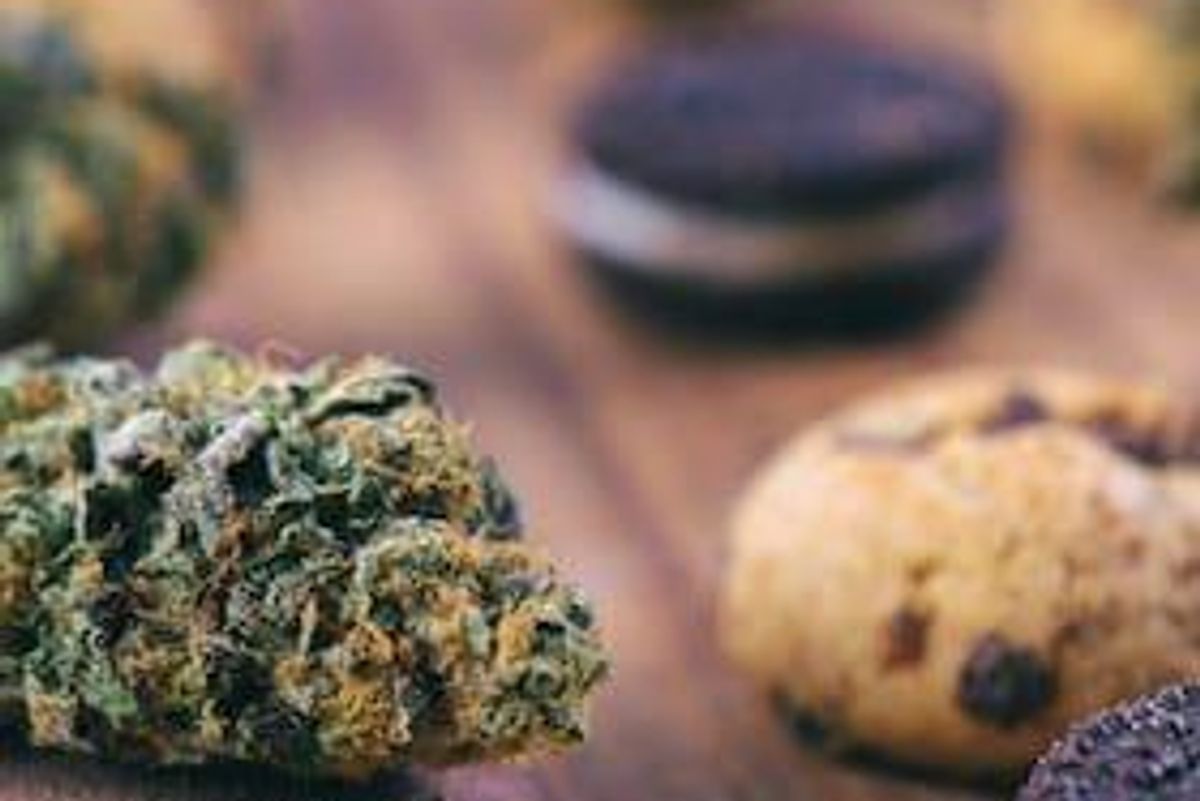Precision Technology for Medical Dosage in Cannabis Edibles

New dosage regulations for medical marijuana require precise technology.
The cannabis edibles market is one that has grown exponentially in the last decade moving from home-made ‘pot brownies’ to a multi-million dollar industry that has cannabis added to mints, coffee drinks, barbecue, desserts and so much more.
At $1.8 billion in sales in 2016, California is responsible for over 30 percent of North American cannabis sales and, in anticipation of legalization, there has been a boom in the state’s cannabis edibles market with 10 percent of total cannabis sales dedicated to edible products.
California’s medical cannabis dosage regulations
In November 2016, during the US election, California voted on and passed the Adult Use of Marijuana Act (AUMA), which legalizes marijuana for adults aged 21 and older. Since then, the state has been working through the regulatory implications of this initiative with the goal of opening business license applications for the legal sale of marijuana on January 1, 2018.
Proposed regulations for edibles include a mandatory dosage limit of 100 milligrams of tetrahydrocannabinol (THC) per marijuana edible package and, within that, no more than 10 milligrams of THC per serving. In a market where potency is a marker of quality, the initiative to place a cap on THC content could be a potential hurdle for the cannabis edible industry.
Precise dosing requires precision technology
While edibles have grown in popularity over the last decade, there is a level of unpredictability associated with their effectiveness. Compared to both the inhalation and sublingual techniques, oral ingestion is the least effective technique for cannabis consumption. Reasons for this include the corrosive impact of stomach acids, a low absorption rate by the intestinal wall, as well as the role the liver plays in breaking down the drug as it enters the bloodstream.
“In essence, the human gastrointestinal (GI) tract usually acts like a funnel, significantly reducing the cannabinoid fraction that actually reaches the viable bloodstream and channeling much of it instead to waste,” says John Docherty, president and director at Lexaria Bioscience (CSE:LXX,OTCQB:LXRP), a technology company with a patent portfolio for improving the delivery of bioactive compounds like THC and cannabidiol (CBD).
As much as one to two hours can pass before the THC and CBD molecules make it through the GI tract and into the bloodstream. And given the diversity of physiologies among patients, how well a drug is absorbed can differ. As such, it is hard to predict the exact way that a person might be affected by an edible product and some consumers might experience more or less of the desired effect than others. Enhanced knowledge around the delivery and effect of orally-consumed cannabis is one place to start.
“The question about a fixed dose of THC per serving is almost meaningless without knowledge of dose response and the pharmokinetics of these products,” said UBC Professor and Co-Director of the Centre for Heart, Lung and Vascular Health, Canada Dr. Philip Ainslie. “The companies that have employed strategic nutritional means to improve delivery and absorption of their edible products will be superior than those who do not.”
There are ways for edible producers to enhance the delivery and absorption rates of THC in their products. Biotechnological tools are under development that can manipulate cannabis at a molecular level, encasing them in medium to long-chain fatty acids that play a multitude of roles as the product travels through the digestive tract into the bloodstream. These fatty acids serve several important functions. First, they protect the cannabis molecules as they travel through the stomach and then allow the molecules to bypass the liver’s filtration system, increasing bio-absorption by 5 to 10-fold to match the high bioavailability of inhalation while reducing the onset time of desired effect from 60 to 120 minutes down to 15 to 20 minutes.
Ultimately, high-absorbency products will increase the effectiveness of regulated doses in cannabis edibles and have the opportunity to serve as a catalyst for growth in this emerging market.
Opportunities for cannabis edible producers
In the medical marijuana space, limited dosage regulations in edible products provide an opportunity for partnerships between technology companies and edibles producers looking to meet dosage regulations while improving the absorption rates of orally ingested medical cannabis. These partnerships could lead to the development of a fast-acting and more potent product.
Incorporating the use of precision dosing technology will also support cannabis edibles manufacturers in lowering the production costs of their products. While the technology costs less than a penny per serving to implement, it also represents 10 to 15 percent cost savings by using less of the active THC molecule to achieve the same effect as the current dosages. With its low implementation costs and its inherent scalability compared to similar pharma-based technologies, precision dosage technology is a highly attractive solution for edibles producers.
With the ability to more precisely manage the effect of lower doses of THC, companies also have the opportunity to create products that appeal to recreational users looking for a much more subtle effect, says Lexaria CEO Chris Bunka. “Companies like Kiva Confections in California have enjoyed overwhelming market success by introducing 10mg-sized mini chocolates and they then introduced both 5mg and even 2.5mg dosage sizes, opening a broader market for recreational users.”
Precision dosage technology is a welcome development in a growing market faced with new regulations and it is an innovative tool that can spell further growth and product diversity for cannabis edible producers.
This INNspired article is sponsored by Lexaria Bioscience (CSE:LXX,OCTQX:LXRP). The article was written according to INN editorial standards to educate investors.